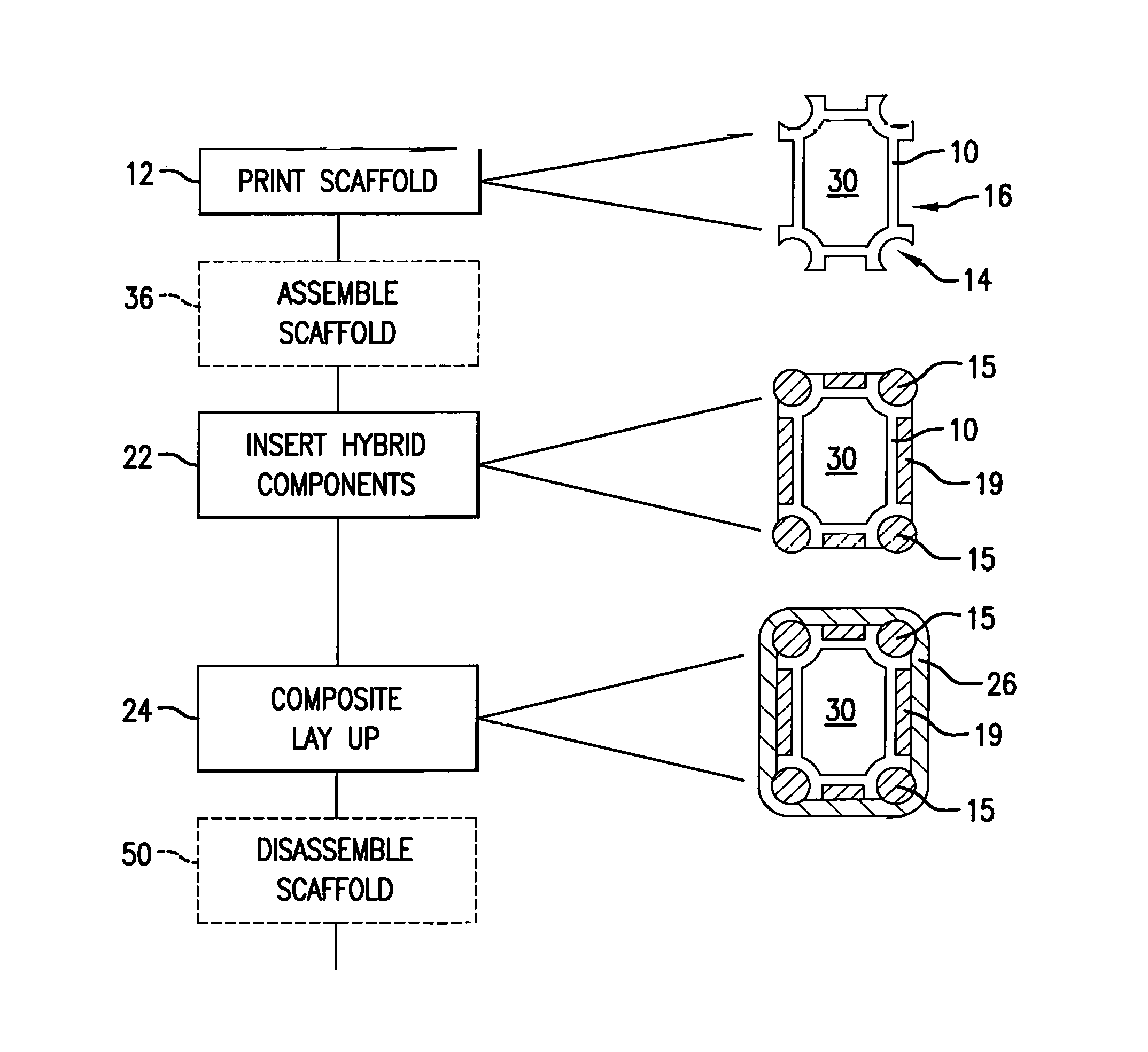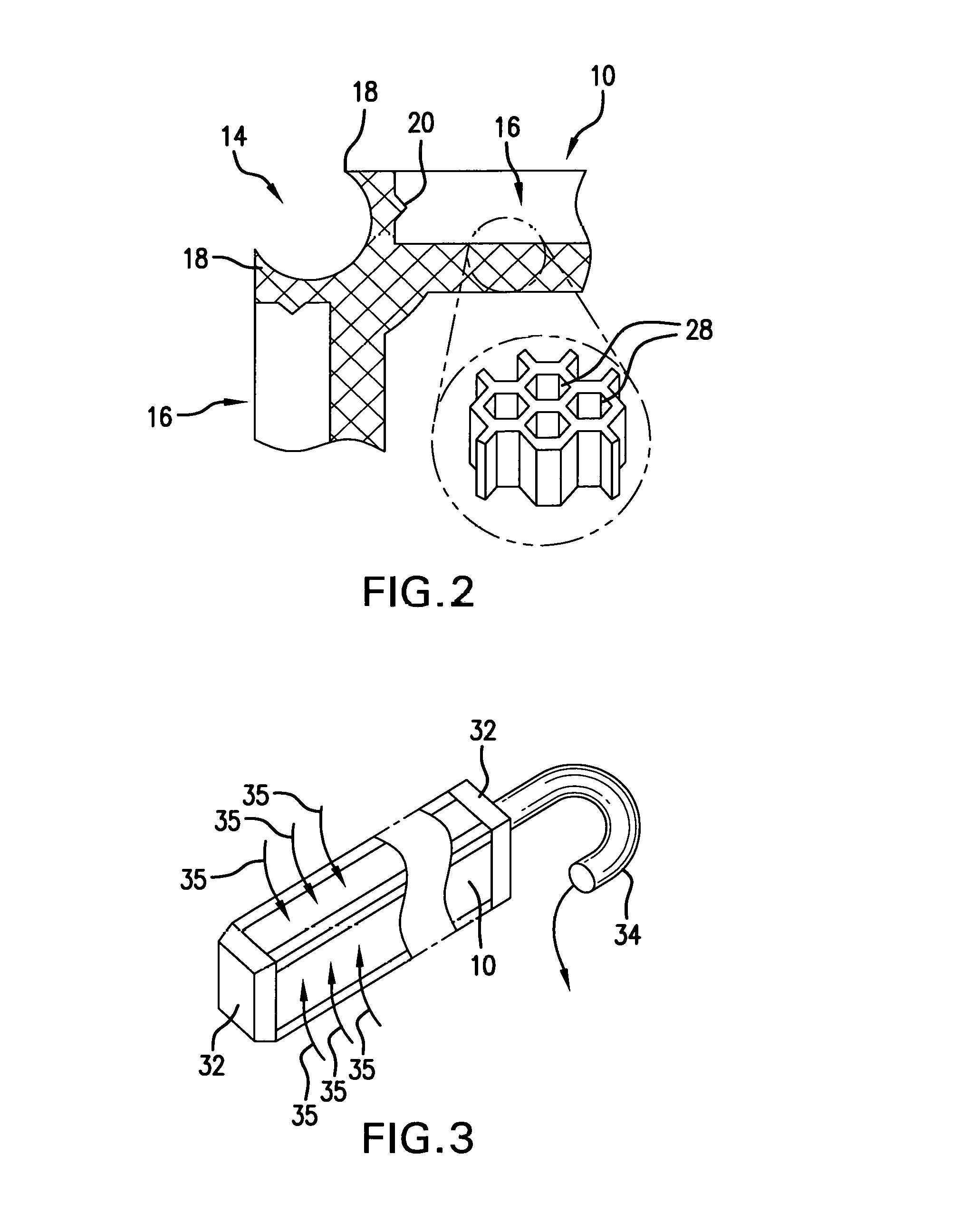Printed Scaffold Structure for Hybrid Composites
a hybrid composite material and scaffold structure technology, applied in the direction of additive manufacturing, layered products, manufacturing tools, etc., can solve the problems of difficult support of hybrid composite materials during integration, and achieve the effect of allowing disassembly and reus
- Summary
- Abstract
- Description
- Claims
- Application Information
AI Technical Summary
Benefits of technology
Problems solved by technology
Method used
Image
Examples
Embodiment Construction
[0019]Referring now to FIG. 1, the present invention provides a manufacturing method in which a 3-D printed scaffold 10 is prepared, as indicated by process block 12, that will serve as a mold and retaining fixture in the construction of a hybrid composite material. The scaffold 10 may be printed by a variety of different 3-D printing technologies including, for example, those using extrusion processes such as the extrusion of a molten plastic filament (fused deposition modeling) and those using photo polymerization (stereolithography) or sintering (e.g., selective laser sintering) or the like. Importantly the material of the scaffold 10 may have relatively modest physical properties far beneath those required of the final hybrid composite product allowing a wide variety of materials to be used including, for example, low temperature or brittle polymers. The material of scaffold 10 may also have relatively stronger physical properties far above those of the hybrid composite polymers...
PUM
| Property | Measurement | Unit |
|---|---|---|
| heat conducting | aaaaa | aaaaa |
| strength properties | aaaaa | aaaaa |
| strength | aaaaa | aaaaa |
Abstract
Description
Claims
Application Information
 Login to View More
Login to View More - R&D
- Intellectual Property
- Life Sciences
- Materials
- Tech Scout
- Unparalleled Data Quality
- Higher Quality Content
- 60% Fewer Hallucinations
Browse by: Latest US Patents, China's latest patents, Technical Efficacy Thesaurus, Application Domain, Technology Topic, Popular Technical Reports.
© 2025 PatSnap. All rights reserved.Legal|Privacy policy|Modern Slavery Act Transparency Statement|Sitemap|About US| Contact US: help@patsnap.com



